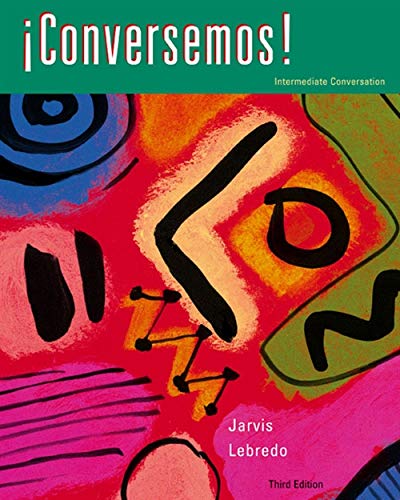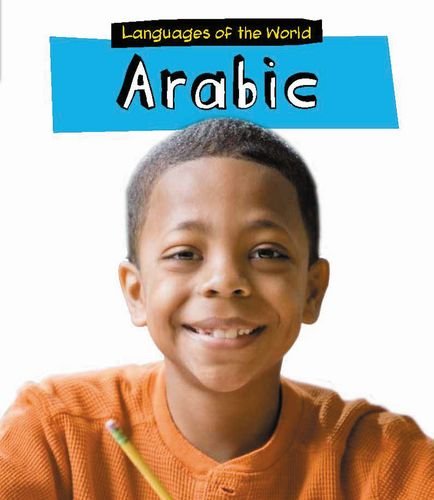-
Éxito comercial
Michael Scott Doyle, T. Bruce Fryer
Paperback (Cengage Learning, Feb. 28, 2014)Looking for the perfect guide to help you succeed in the Spanish speaking business world? ÉXITO COMERCIAL: PRÁCTICAS ADMINISTRATIVAS Y CONTEXTOS CULTURALES, SEXTA EDICIÓN, will provide you with a solid foundation in business vocabulary, basic business and cultural concepts, and situational practice. By using the text, audio CD, and web-delivered media, you will soon have the skills you need for success!
-
Horizons
Joan H. Manley, Stuart Smith, Marc A. Prevost, John T. McMinn-Reyna
Hardcover (Cengage Learning, Jan. 1, 2014)HORIZONS is a complete elementary French program that makes learning French easier through its step-by-step skill-building methodology, flexible and accessible approach to grammar and new vocabulary, and creative and sophisticated coverage of Francophone culture. Through varied interactive activities and clear grammar explanations, the text helps students communicate effectively in French while culturally connecting them to the Francophone world. HORIZONS features a clear, easy-to-follow structure that is ideal for instructors with any level of teaching experience. HORIZONS carefully guides students Competence by Competence, through their first year of elementary French.
-
Behind the Mask: A Book about Prepositions
Ruth Heller
Paperback (Puffin Books, Nov. 23, 1998)Through clever, rhyming text and boldly colorful illustrations, students and language lovers of all ages will enjoy exploring Ruth Heller's world of prepositions. "To say that Heller has a way with words is to understate a multifaceted talent."-- Publishers Weekly"Rhyming text...provides many examples of prepositions as well as some rules of usage. Large, colorful drawings illustrate the words imaginatively." -- Booklist N
N
-
A Cache of Jewels: And Other Collective Nouns
Ruth Heller
Paperback (Puffin Books, Feb. 23, 1998)"Highly informative and lushly illustrated. An unbeatable combination for pleasure and learning." —Children's Book Review Service "The illustrations and the vocabulary will delight small eyes and ears." —School Library Journal Q&A - Ruth Heller - A Paperstar Profile Ruth Heller - ProfileHow did you become interested in writing books for children?I loved reading to my own children, and when they started school, I became the P.T.A. library chairman. I was the one who got to pick and choose and spend a nice fat budget for the elementary school library. I feel as though I?ve been surrounded by children?s books for years.I suppose this and my strong art background are what prompted my trying to write.What is the biggest influence in your style of writing, and how has it changed since you first began?Hillaire Belloc, Gilbert and Sullivan, Edward Lear?I grew up reading all of them. I love their rhythm, and I loved reading Dr. Seuss to my children. No question, these were my influences.I think I?ve become wordier, not quite as minimal and succinct as I used to be.What made you decide to write a series on the parts of speech?Take a peek at the back end paper of the hardcover edition of A Cache of Jewels. You?ll see that I committed myself, in print, to writing a book for each part of speech.Here I am, ten years later, thankfully completing the very last book in this series. It will be published in 1998.Do you begin with the words or pictures when you are developing a book? How does the second part come together?The first step is to decide what I am going to say on each page. Then I can begin to visualize my illustrations. The words dictate what the illustration will be, but that still gives me many options.Sometimes the two come together easily, sometimes not. If not, I pursue new research material until something clicks.Did you learn anything new about the parts of speech while writing these books?I learned many things I had forgotten, and some new information and rules that I had never known. I also learned that the textbooks that I used for research were difficult to understand and somewhat boring, and that I am guilty of frequent misuse of the English language.How do you choose the images in your book?An art teacher once told me to fall in love with whatever I was drawing. So I choose images that I love: candy, ice cream, butterflies, sea creatures, carousels, jewels, etc. N
N
-
Up, Up and Away: A Book about Adverbs
Ruth Heller
Paperback (Puffin Books, Oct. 26, 1998)"Lively...The playfully rhymed text flows effortlessly as it discusses superlatives, irregular adverbs, and double negatives....Informative and fun."-- School Library Journal"Using expansive color drawings and catchy rhymes, Heller writes about words frequently and vividly and with an unmistakable flourish....A clever introduction."-- Booklist"This eye-catching book explains its perplexing subject well and clearly, and more memorably than could any grammar textbook." -- The Bulletin of the Center for Children's Books L
L
-
Japanese
Harriet Milles
Library Binding (Heinemann, Jan. 1, 2012)This book looks at Japanese, and examines where it is spoken, who speaks it, what alphabet the language is written in, and other interesting facts. The book also includes introductions on how to say key phrases in Japanese, such as how to say hello and goodbye, or talk about your home, school, and family. A pronunciation guide at the back of the book explains how to pronounce the Japanese words used throughout the book. O
O
-
Conversemos! Intermediate Conversation
Ana Jarvis, Raquel Lebredo
Paperback (Houghton Mifflin Company, Oct. 29, 2002)Conversemos! is designed for use in intermediate Spanish courses in conjunction with other texts or as a core text in a conversation course. Its lively, interactive approach develops speaking and listening skills and facilitates student interaction. Conversemos! is correlated thematically to the core text Continuemos!, 7/e, and is easily adaptable for use with other core texts.
-
Swahili
Catherine Chambers
Paperback (Heinemann, Jan. 1, 2012)This book looks at Swahili, and examines where it is spoken, who speaks it, what alphabet the language is written in, and other interesting facts. The book also includes introductions on how to say key phrases in Swahili, such as how to say hello and goodbye, or talk about your home, school, and family. A pronunciation guide at the back of the book explains how to pronounce the Swahili words used throughout the book. O
O



